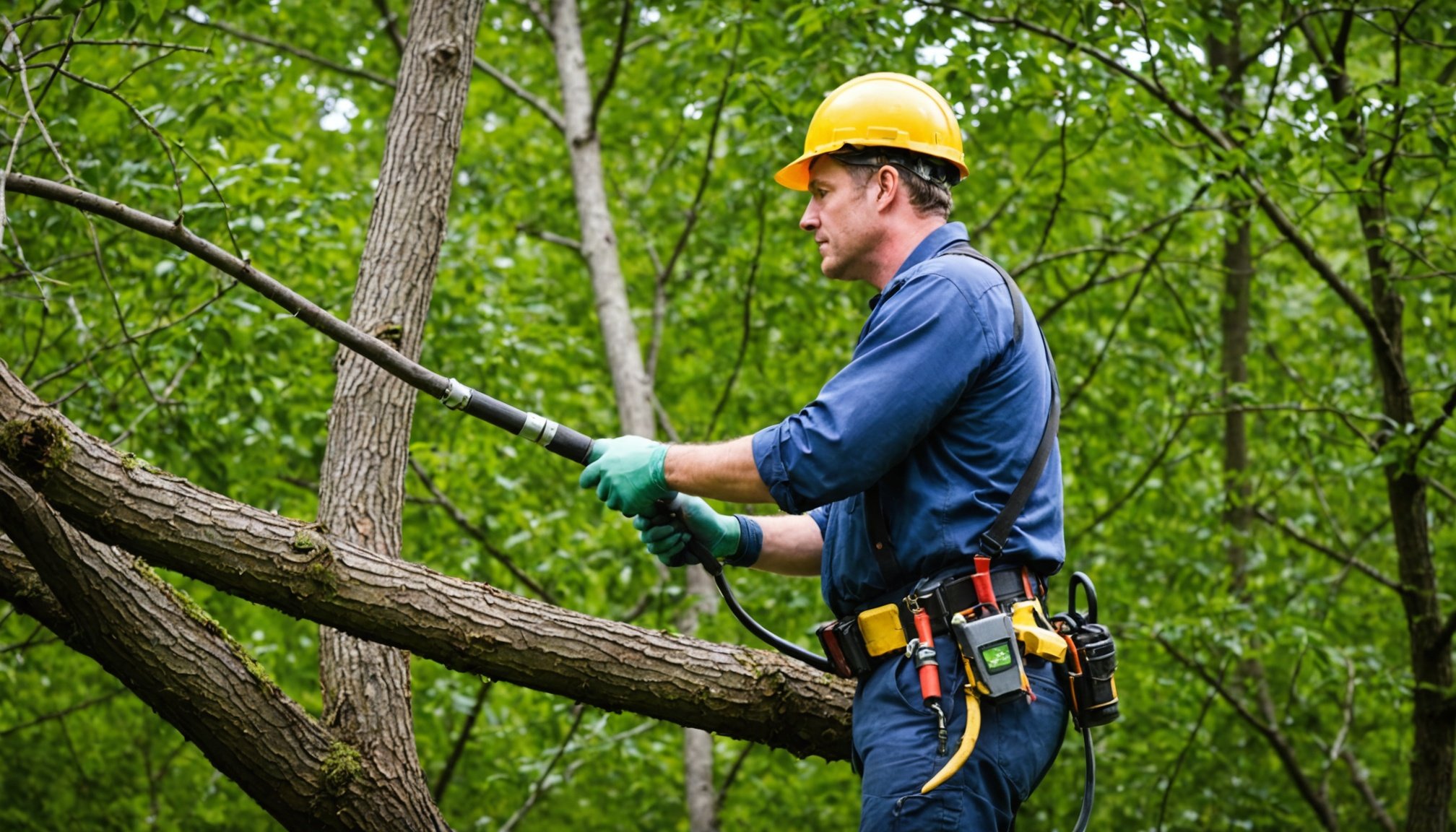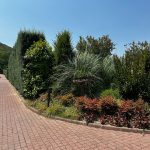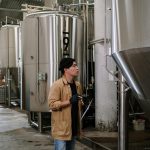Becoming a qualified tree surgeon involves more than just climbing trees. You need specific certifications, hands-on experience, and adherence to safety standards to work effectively and legally. Understanding the key qualifications, from apprenticeships to recognized diplomas, helps you plan your career or hire the right professional with confidence. This guide breaks down what you need to succeed in this demanding, environmentally vital role.
Overview of Tree Surgeon Qualifications and Certifications
Entering the profession of a tree surgeon requires obtaining key qualifications recognized within the industry. These certifications demonstrate both practical skills and theoretical knowledge essential for safe and effective tree work.
Topic to read : Chin fillers in London: enhance your facial harmony today
Common Certifications for Arborists include the Royal Forestry Society Certification in Arboriculture (RFS Cert Arb), which confirms proficiency in chainsaw operation and aerial rescue techniques. The City & Guilds Level 2-3 qualifications, obtained through approved centers, are also highly valued as they cover advanced skills in arboriculture, aligning with industry standards.
You can view more details on this page: Tree Surgeon Training. It explains the importance of ongoing professional development and how memberships in bodies like The Arboricultural Association support career growth. Continuing training ensures that tree surgeons stay current with safety standards and environmental regulations, which evolve with legislation and industry best practices.
In parallel : Revitalize your smile at dubai's premier dental clinic
Recognition of industry standards such as RFS Cert Arb and City & Guilds (Level 2-3) helps qualify individuals for complex tasks, including hazardous tree removal and climbing. These formal qualifications not only elevate a practitioner’s credibility but are often mandatory to access certain types of work and contracts.
Specialized courses are also crucial, including chainsaw maintenance, cross-cutting, and tree climbing rescue training. These courses provide vital skills for day-to-day operations, reducing safety risks and increasing efficiency. For instance, the City & Guilds NPTC Level 2 Award in Chainsaw Maintenance and Cross-Cutting emphasizes proper technique and safety protocols.
Ongoing training and professional memberships ensure that practitioners are updated on new techniques, safety regulations, and environmental impacts. Memberships in organizations like The Arboricultural Association provide access to certified courses, industry updates, and networking opportunities that can propel careers forward.
Applying for certifications such as NPTC or ISA certification (International Society of Arboriculture) enhances employability and professional reputation. These credentials are often linked with higher salary prospects, especially when combined with practical experience gained through apprenticeships or on-the-job training.
In summary, the pathway to becoming a qualified tree surgeon includes acquiring certifications like RFS Cert Arb, City & Guilds Level 2-3, and continually expanding skills through reputable courses. These certifications form the foundation for a safe, compliant, and successful career in arboriculture.
You can find further insights into Tree Surgeon Training on the dedicated page, which offers comprehensive details on certification pathways and training programs tailored for aspiring tree surgeons.
Educational and Training Pathways for Aspiring Tree Surgeons
Formal Education Options
Aspiring tree surgeons can start their careers by exploring formal education pathways that establish the foundation for professional tree care credentials. College courses such as T Levels in Agriculture and Land Management are a recognised entry point, targeted at delivering both classroom-based theory and hands-on practical skills. These courses are part of the broader UK arborist qualification pathway, ensuring students learn essential skills for arboriculture professionals early in their progression.
For those seeking advanced knowledge or aiming for management roles, university degrees specializing in woodland ecology or conservation also contribute to the required training for tree specialists. Most degree programs demand 1–3 A-levels or equivalent vocational qualifications for entry, making it necessary to consider eligibility criteria for tree surgery qualifications. These academic routes often cover fundamental concepts in soil and tree health, risk assessment knowledge for tree surgeons, and environmental regulations affecting tree care.
Apprenticeships and On-the-Job Training
A practical alternative or complement to academic study is enrolling in apprenticeship programs in arboriculture. These structured pathways, such as the Arborist Level 2 Intermediate or Forest Craftsperson Level 3 Advanced, directly address experience requirements for tree care experts. Apprenticeships typically span a minimum of two years and combine workplace learning with dedicated training days or blocks off the job.
Initial roles may involve working as a groundworker or forest labourer, supporting more qualified staff with routine site preparation or debris management. Such positions allow trainees to build practical skills for climbing and rigging, chainsaw operation training, and the application of health and safety standards in tree surgery. The immersive experience covers manual handling for arborists and weight and load handling training, necessary not only to satisfy legal responsibilities of tree surgeons but also to prepare for challenging outdoor environments.
Industry-Specific Courses and Certifications
Industry-recognized certificates are vital for demonstrating proficiency in essential areas and maintaining compliance with statutory requirements. Certifications such as the City & Guilds NPTC chainsaw operation and safety courses are a staple of the required training for tree specialists, guaranteeing a strong command of chainsaw cross-cutting qualifications, prioritising both effectiveness and personal safety. Obtaining CS30 and CS31 qualifications, which cover chainsaw maintenance, cross-cutting, and felling trees up to 380mm, is often a mandatory license for tree work.
Practical as well as theoretical mastery is further validated through the City & Guilds NPTC Level 2 Award in Tree Climbing and Aerial Rescue. This proves a candidate’s competence in qualifications for aerial tree work and underscores risk assessment knowledge for tree surgeons working at height. For those focusing on stump removal or equipment handling qualifications, further specialist modules are available.
A commitment to ongoing professional development in arboriculture is critical. Engaging with advanced training modules enables professionals to keep pace with best courses for tree surgeon training, evolving industry standards, and updates to health and safety standards in tree surgery. Continuous learning, in turn, enhances employability and ensures that arborists meet qualifications that improve employability and respond to emerging trends and challenges within the industry.
Recognized Certifications and Professional Memberships
Key Certifications
Industry-recognized certificates lay the foundation for any aspiring arborist. The Royal Forestry Society Certification in Arboriculture (RFS Cert Arb) is a benchmark, confirming valuable competency in arboriculture’s essential skills for arboriculture professionals, such as chainsaw operation and effective aerial rescue. This certificate validates both technical proficiency and adherence to health and safety standards in tree surgery, ensuring the individual meets UK arborist qualification pathway requirements.
Another pillar is the City & Guilds NPTC Certificates, which span a range of crucial industry-recognized certificates for arborists. Obtaining CS30 and CS31 qualifications forms part of this framework, covering chainsaw maintenance and felling techniques. These credentials count as required training for tree specialists, and are highly regarded for their robust chainsaw operation training components and for addressing health and safety standards in tree surgery.
The International Society of Arboriculture (ISA) Certification signals a commitment to global professional tree care credentials. Benefits of ISA certification include a focus on up-to-date environmental regulations affecting tree care and evidence of the arborist’s ongoing professional development in arboriculture, a necessity when operating in a dynamic industry.
Additional Credentials
Beyond primary certificates, tree surgeons pursue further professional tree care credentials. LOLER Certification—covering lifting operations and equipment—demonstrates compliance with legal responsibilities of tree surgeons and reinforces the importance of health and safety standards in tree surgery. Statutory compliance training such as tree preservation order compliance ensures arborists work within required environmental regulations affecting tree care, especially on protected or heritage trees.
Experience requirements for tree care experts change over time, so certification renewal and recertification become necessary. Practitioners sustain their credentials through ongoing professional development in arboriculture, which is a central pillar in maintaining industry-recognized certificates and adapting to changes in statutory compliance training or qualifications required for hazardous tree removal.
Industry Bodies and Membership Benefits
Membership with industry bodies like The Arboricultural Association further establishes credibility and integrates arborists into a broader professional network. These associations provide updates on best courses for tree surgeon training and mandatory licenses for tree work, as well as serving as platforms for sharing advice on risk assessment knowledge for tree surgeons.
Access to these communities means members benefit from networking, exclusive career development resources, and close alignment with recognized industry standards. Professional arborist association memberships also highlight dedication to qualifications for aerial tree work, facilitate attendance at practical workshops on equipment handling qualifications, and connect members to ongoing professional development in arboriculture.
By holding and updating a suite of industry-recognized certificates, maintaining compliance with statutory requirements, and actively participating in professional forums, arboriculture professionals remain at the forefront of their field—both in technical expertise and holistic, responsible tree care.
Practical Skills and Safety Standards Required
Essential Technical Skills
Core technical capabilities are non-negotiable for tree surgeons. Mastery of tree climbing, rigging, and pruning techniques is reinforced in every stage of certifications for arborists. Tree surgery demands safe, controlled ascent using ropes, harnesses, and mechanical devices, all skills honed through the best courses for tree surgeon training and a structured apprenticeship program in arboriculture. Precision in chainsaw operation training, including cross-cutting and controlled felling, is foundational—validated by NPTC certification benefits and measured through CS30 and CS31 qualifications. Equipment handling qualifications must extend to daily maintenance, ensuring all machinery—chainsaws, chippers, ropes—remains fit for demanding use. Many employers view practical skills for climbing and rigging as the bedrock of experience requirements for tree care experts, forming the evaluation criteria in the UK arborist qualification pathway.
Safety Protocols and Regulatory Compliance
Stringent health and safety standards in tree surgery set the tone for industry practice. Every professional must complete working at height training for arborists, equipping individuals for potential aerial rescue scenarios. A detailed risk assessment knowledge for tree surgeons is necessary before any job, and adapting to environmental regulations affecting tree care ensures ongoing compliance. Personal Protective Equipment (PPE) is not just a regulatory tick-box but an everyday necessity, consistently reinforced in required training for tree specialists. This protective gear is now as standard as the ladder safety and training certification provided during courses covering the qualifications required for stump removal or hazardous tree work. Ongoing professional development in arboriculture is tied directly to keeping up with statutory compliance training and mandatory licenses for tree work, especially when dealing with protected trees or sensitive urban tree management education.
Legal Responsibilities and Insurance
A robust understanding of legal responsibilities of tree surgeons is necessary from day one. Licenses may be required for complex or high-risk jobs, including specific permissions for working on trees subject to Tree Preservation Orders. Insurance requirements for tree surgeons cover public liability, employee safety, and specialized operations, forming a key pillar of tree surgeon industry standards. Adherence to qualifications for tree risk management means keeping documentation current and understanding how to become a certified arborist guarantees readiness for inspections or unforeseen incidents. This legal awareness, grounded in industry-recognized certificates, helps professionals meet ongoing professional development in arboriculture expectations and ensures client and public safety remains at the forefront of every project.
Continuing Education and Career Development Opportunities
Advanced Qualifications and Specializations
Progressing in ongoing professional development in arboriculture means tackling advanced qualifications tailored for both hazardous and heritage tree work. These courses are a cornerstone for professionals aspiring to handle demanding sites or protected environments and often build on NPTC certification benefits and fundamental risk assessment knowledge for tree surgeons. Select programs highlight credentials for arborists interested in mastering soil health, tree disease identification training, and broader ecological considerations, equipping them with certifications for arborists who consult or work on diverse landscapes.
Beyond technical skill, ongoing professional development in arboriculture recognizes the value of client communication and soft skills training. Many industry-recognized certificates now integrate practical skills for climbing and rigging, with a growing emphasis on the best courses for tree surgeon training that address the human element of the trade. This balanced approach is critical for those targeting UK arborist qualification pathways and needing to demonstrate required training for tree specialists in specialist fields.
Career Progression Paths
Arboriculture offers routes from apprenticeships in arboriculture—starting as a groundworker or entry-level apprentice—to high-level roles such as supervisor or consultant. Experience requirements for tree care experts vary by role but consistently prioritize health and safety standards in tree surgery. Professional tree care credentials such as the City & Guilds and International Society of Arboriculture accreditations are pivotal milestones on the UK arborist qualification pathway.
Specializations, such as urban forestry, habitat protection, or consultancy, allow individuals to further develop niche expertise and pursue sustainable tree care certifications or advanced pruning qualification. For many, professional arborist association memberships underpin continued learning, providing access to mandatory licenses for tree work, ongoing training, and the tree surgeon qualification levels necessary to stay competitive. This approach increases employability and opens doors for those with advanced ongoing professional development in arboriculture.
Resources and Support Services
Support extends beyond the classroom. National agencies and industry training providers offer a host of recommended courses, rigorous skills assessments, and personalized career advice. Networking events, seminars, and toolbox talks are designed specifically for those committed to continuing education requirements and who seek insights into tree surgeon job responsibilities and qualifications. These services cover topics from manual handling for arborists to statutory compliance training and environmental impact awareness courses.
By leveraging resources such as skills assessments, insurance requirements for tree surgeons, and eligibility criteria for tree surgery qualifications, professionals remain aligned with statutory and industry benchmarks. This ecosystem ensures that arborists meeting tree surgeon licensing requirements in England and beyond always have access to the latest developments and opportunities in ongoing professional development in arboriculture.
Tree Surgeon Qualifications: Core Certifications and Training Pathways
A professional tree surgeon in the UK must obtain several industry-recognized certificates and demonstrate essential skills for arboriculture professionals. The most common credentials—demanded across the country—form the backbone of the UK arborist qualification pathway.
To start, many pursue the City & Guilds NPTC certification. Two key NPTC units—CS30 (Chainsaw Maintenance & Cross-Cutting) and CS31 (Felling Trees up to 380mm)—are foundational, equipping trainees with safe chainsaw operation training and practical tree felling skills. These NPTC certification benefits are recognized industry-wide, signalling competence in both maintenance and field application. The units also help meet statutory requirements for safety—demonstrating alignment with modern health and safety standards in tree surgery.
Other vital routes include the Royal Forestry Society Certification in Arboriculture (RFS Cert Arb) and qualifications via the International Society of Arboriculture (ISA), showing breadth in both forest and urban tree care. Many employers require these qualifications for arborist job responsibilities due to the high-risk nature of the role.
Pathways aren’t limited to technical certificates. Apprenticeship programs in arboriculture—like the Arborist Level 2 Intermediate—blend hands-on and classroom-based learning, forming a structured required training for tree specialists. These programs cover not just technical modules but also experience requirements for tree care experts, supporting candidates in developing both advanced and soft skills that improve employability.
Gaining practical skills for climbing and rigging demands further credentials. The City & Guilds NPTC Level 2 Award in Tree Climbing and Aerial Rescue (previously CS38), and Aerial Cutting of Trees Using Free-fall Techniques (known as CS39), enable safe work at height and effective emergency tree surgery skills. These qualifications for aerial tree work are mandatory for operatives who intend to ascend, rig, and rescue in real-life contexts.
Alongside these technical areas, aspiring professionals should complete risk assessment training and learn about legal responsibilities of tree surgeons and environmental regulations affecting tree care, ensuring their work always complies with national standards and the industry’s code of conduct.
Continued professional development is encouraged—ongoing professional development in arboriculture through refresher courses and certification renewal and recertification preserves the currency of knowledge. This ensures all arborists keep pace with evolving technologies and maintain high safety and ethical standards.
Tree surgeon qualification levels are clearly defined; industry-recognized certificates paired with structured apprenticeships and ongoing updates assure readiness for careers in the sector—whether starting as an apprentice, pursuing the best courses for tree surgeon training, or expanding into supervisory roles.











